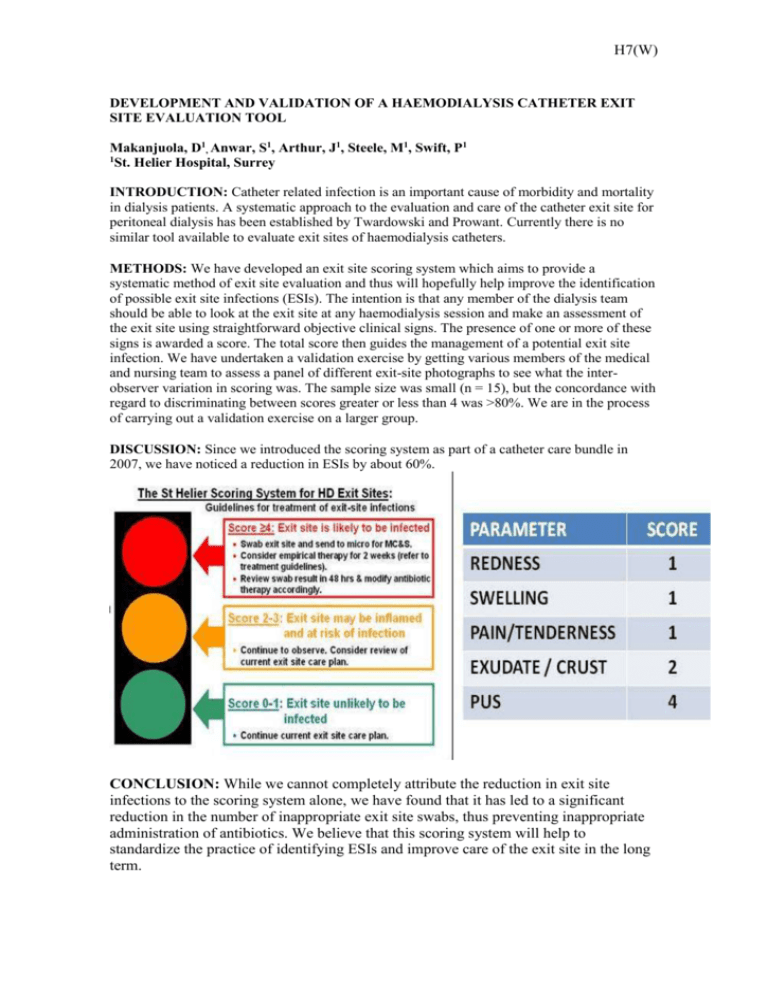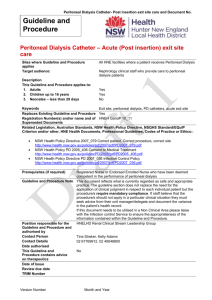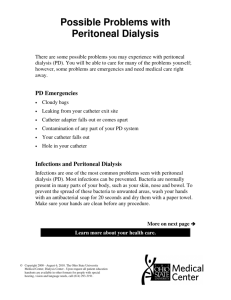Abstract #465 Details - British Renal Society
advertisement

H7(W) DEVELOPMENT AND VALIDATION OF A HAEMODIALYSIS CATHETER EXIT SITE EVALUATION TOOL Makanjuola, D1, Anwar, S1, Arthur, J1, Steele, M1, Swift, P1 1 St. Helier Hospital, Surrey INTRODUCTION: Catheter related infection is an important cause of morbidity and mortality in dialysis patients. A systematic approach to the evaluation and care of the catheter exit site for peritoneal dialysis has been established by Twardowski and Prowant. Currently there is no similar tool available to evaluate exit sites of haemodialysis catheters. METHODS: We have developed an exit site scoring system which aims to provide a systematic method of exit site evaluation and thus will hopefully help improve the identification of possible exit site infections (ESIs). The intention is that any member of the dialysis team should be able to look at the exit site at any haemodialysis session and make an assessment of the exit site using straightforward objective clinical signs. The presence of one or more of these signs is awarded a score. The total score then guides the management of a potential exit site infection. We have undertaken a validation exercise by getting various members of the medical and nursing team to assess a panel of different exit-site photographs to see what the interobserver variation in scoring was. The sample size was small (n = 15), but the concordance with regard to discriminating between scores greater or less than 4 was >80%. We are in the process of carrying out a validation exercise on a larger group. DISCUSSION: Since we introduced the scoring system as part of a catheter care bundle in 2007, we have noticed a reduction in ESIs by about 60%. CONCLUSION: While we cannot completely attribute the reduction in exit site infections to the scoring system alone, we have found that it has led to a significant reduction in the number of inappropriate exit site swabs, thus preventing inappropriate administration of antibiotics. We believe that this scoring system will help to standardize the practice of identifying ESIs and improve care of the exit site in the long term.







